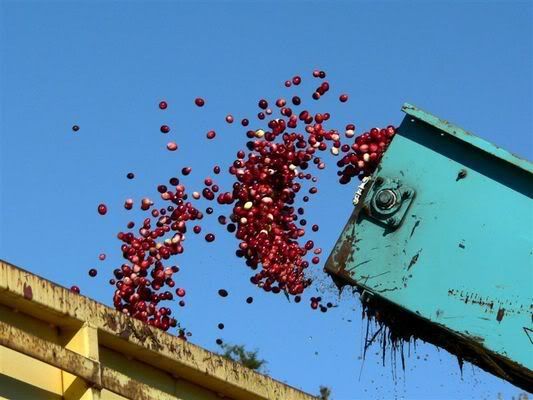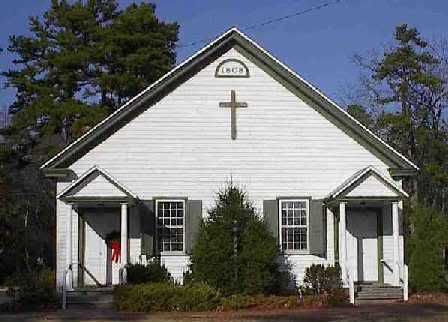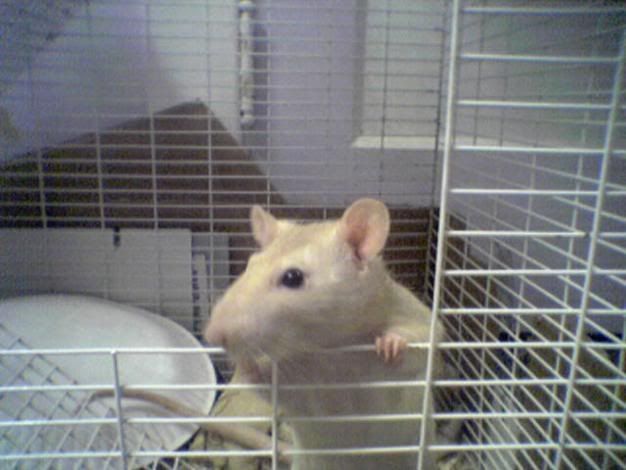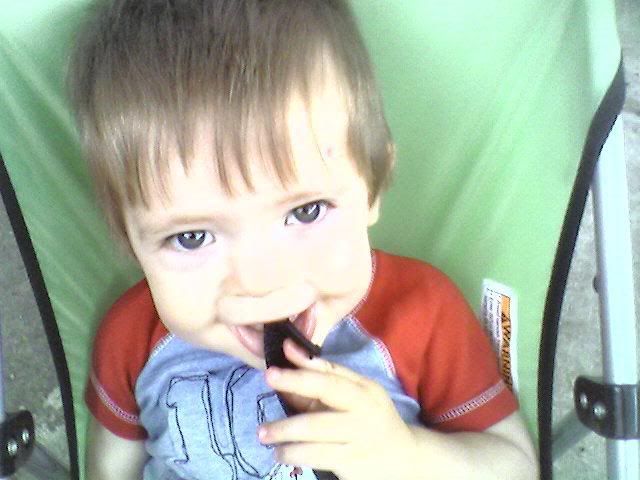 Fall—my most favorite time of year! The leaves are just starting to get serious about turning color in my part of the Eastern Seaboard. By Halloween, we will have lost most of our leaves after a day or two of rain and wind, but now they’re going orange, red and gold in sequence: vines first, deciduous trees next and the sturdier shrubs last. Even if we haven’t had any cool weather by the middle of September, the vining plants tip us off to the unofficial beginning of autumn.
Fall—my most favorite time of year! The leaves are just starting to get serious about turning color in my part of the Eastern Seaboard. By Halloween, we will have lost most of our leaves after a day or two of rain and wind, but now they’re going orange, red and gold in sequence: vines first, deciduous trees next and the sturdier shrubs last. Even if we haven’t had any cool weather by the middle of September, the vining plants tip us off to the unofficial beginning of autumn.
Every fall we have the holiday I’ve invented for my family—my Annual Breakfast before the Country Living Fair at Batsto, New Jersey, held this year on October 15. Most holidays just depress me. There are a lot of memories about late family members who had their birthdays or died on the major holidays, but the month of October has no sad memories or associations for me.
I don’t even know how many years the Country Living Fair has been held at the restored 19th-century village of Batsto. Composed of thirty-three historic buildings and structures--including the Batsto Mansion, gristmill, sawmill, general store, workers' homes and post office--Batsto Village is a New Jersey Historic site and is listed on the New Jersey and National Registers of Historic Places.
Historically, this area was the homeland of the indigenous Lenni-Lenape, who signed the first Native American treaty with the newly-formed United States Government on September 17, 1778. Although some small Lenni-Lenape communities remain in New Jersey and Pennsylvania, the modern Delaware Native American tribes are located in Oklahoma. (See also Lee Sultzman’s Delaware History, Susan Ditmire’s Native People of New Jersey and Terrie Winson’s Lenni Lenape)
In 1784, William Richards bought the Batsto Iron Works (originally built in 1766). It remained in his family and was operated by his son and grandson (who built most of the village) for the next 92 years. Along with the pig iron industry in general, Batsto declined in the mid-1800's, finally falling into receivership after a brief period as a glassworks. The complex was purchased by Joseph Wharton at a Masters Sale in 1876. Wharton made improvements to the mansion and many of the village buildings, built a sawmill, cleared the land, planted cranberries and other crops, and ran a forest products and agriculture business until he died in 1909.
Family and friends are to meet at my house at 9:00am sharp! Well, the sharp part is negotiable. It’s hard to get out of bed that early on weekends, and we usually get a call saying several people will be straggling. Brother brings his pure-bred Westie and his pure-bred basset hound, since most fairgoers bring their pure-bred dogs. I would bring Daisy the Terrier, even though her lineage is a little jumbled (just like mine!) but, unlike her superchilled cousins, she can’t behave herself for five minutes (just like me!). This is a wonderful day for me, and I look forward to this "holiday" all year long.
Managed by the Girard Trust Company in Philadelphia from the time of Wharton’s death, Batsto was purchased by the State of New Jersey in 1954. The few people still living in the Village houses remained as long as they wanted, and in 1989 the last house was vacated. Today the village is the core of Wharton State Forest, which in turn is part of the Pinelands National Reserve. (See also The Pinelands National Reserve and NJPineBarrens.com)
Mr. Pseudonym kindly helps with the last-minute "desperation" house cleaning and I work hard on breakfast, making a lot of things from “scratch” and setting a beautiful table. I receive many compliments and a bit of criticism from my family for using the “good china,” so to speak: “Why do you have to use fancy glassware? Why not just put out the carton of juice? jug of maple syrup? jars of jam?” Oh, well, they can’t help it; people from the Pine Barrens tend to be a bit…uh…how shall we say… primeval. We finish up breakfast while yelling at the dogs to stop racing around the house like ferrets on speed (Daisy's influence), and we finally pile into several cars for the trip down to Batsto.
This year, we had perfect weather--not too hot, not too cold, lots of sunshine and a cris p, autumn breeze. There are always a lot of crafters at the fair, but I'm not especially into buying old washboards costing $32 because they're decorated with artificial flowers and hemp-vine bows. But there's also music and dancing onstage, food and drink vendors, a see-through beehive, pony rides, antiques, a footbridge over the cedar-water river and a display of old cars, tractors and various motors. (A side trip to the Batsto-Pleasant Mills United Methodist Church will take place on another day, but it is of special interest to our family since Brother and Sis-In-Law were married there!)
p, autumn breeze. There are always a lot of crafters at the fair, but I'm not especially into buying old washboards costing $32 because they're decorated with artificial flowers and hemp-vine bows. But there's also music and dancing onstage, food and drink vendors, a see-through beehive, pony rides, antiques, a footbridge over the cedar-water river and a display of old cars, tractors and various motors. (A side trip to the Batsto-Pleasant Mills United Methodist Church will take place on another day, but it is of special interest to our family since Brother and Sis-In-Law were married there!)
The Village itself is worth walking even if there is no special event going on. The mansion is huge, with tall windows and a wide porch three-quarters the way around it. Some of the worker's homes have been partially restored, and the visitor's center has a gift shop and flush toilets for the faint of heart. (We studiously avoid the Porta-Potties sprinkled here and there because, you know, ewwwwwwwww!)
Using the mansion as a rendezvous point, our party splits up to pursue our varying interests. Brother leans backward and takes off at a trot, to be yanked around by his dogs at about 10mph for the entire day. I make a bee-line for the antiques and the kids seek out the food vendors lest they faint from inadequate nutrition. We meet several times on the mansion porch to compare our plunder (Brother lashes the dogs to a post while he catches his breath). When no one can walk another step and even the dogs seem subdued, we finally head back to my house for coffee. Everyone agrees this has been the best Country Living Fair Day yet.




